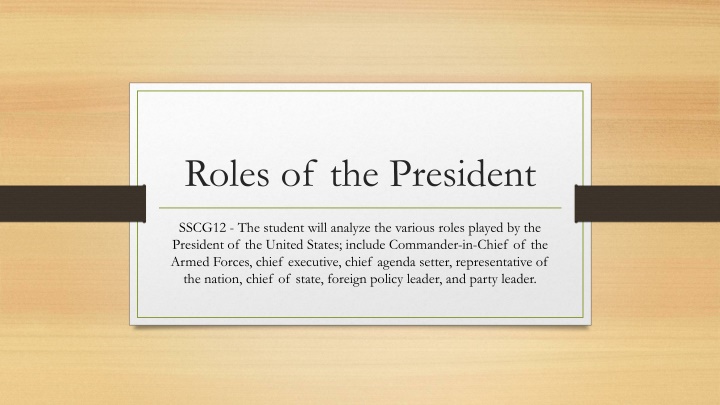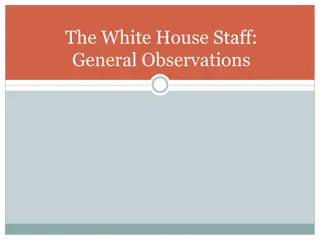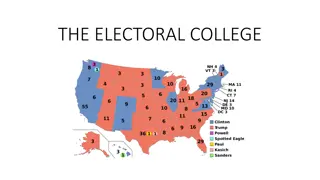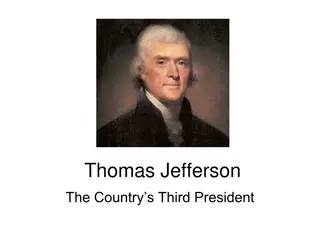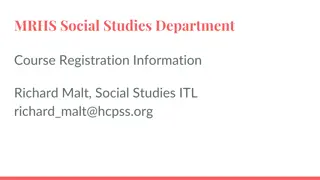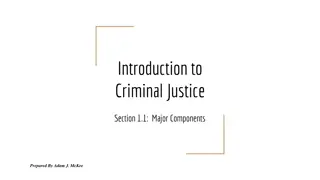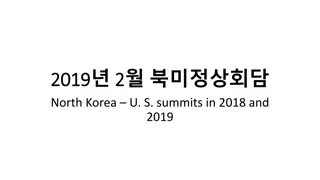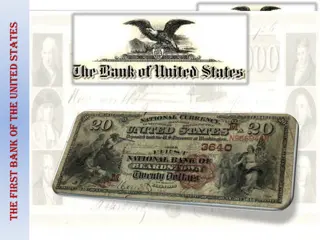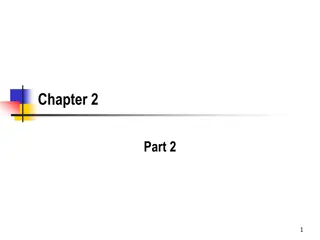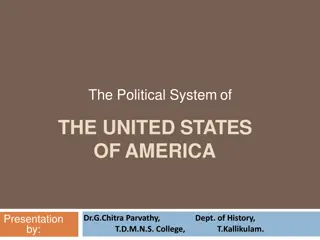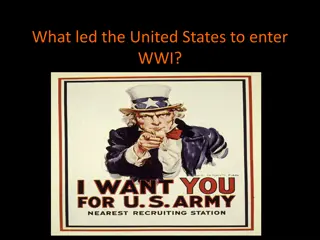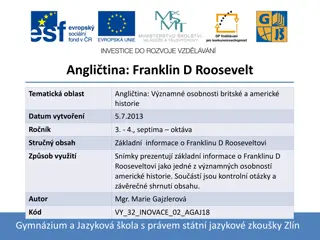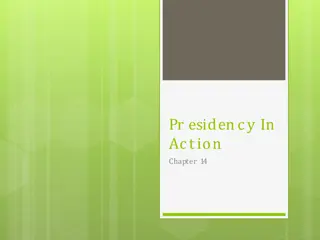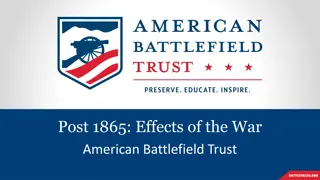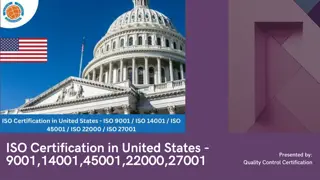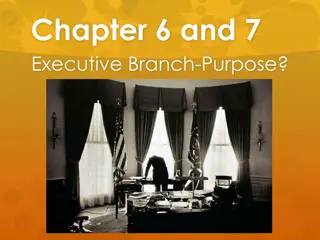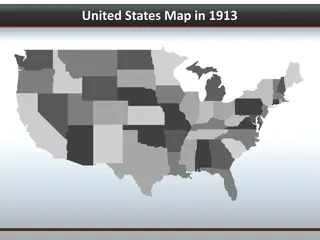Roles of the President of the United States: A Comprehensive Overview
The President of the United States fulfills various crucial roles, including Commander-in-Chief of the Armed Forces, chief executive, chief agenda setter, representative of the nation, chief of state, foreign policy leader, and party leader. From inspiring the nation as Chief of State to shaping foreign policy as Chief Diplomat, the President's duties are diverse and impactful.
Download Presentation

Please find below an Image/Link to download the presentation.
The content on the website is provided AS IS for your information and personal use only. It may not be sold, licensed, or shared on other websites without obtaining consent from the author.If you encounter any issues during the download, it is possible that the publisher has removed the file from their server.
You are allowed to download the files provided on this website for personal or commercial use, subject to the condition that they are used lawfully. All files are the property of their respective owners.
The content on the website is provided AS IS for your information and personal use only. It may not be sold, licensed, or shared on other websites without obtaining consent from the author.
E N D
Presentation Transcript
Roles of the President SSCG12 - The student will analyze the various roles played by the President of the United States; include Commander-in-Chief of the Armed Forces, chief executive, chief agenda setter, representative of the nation, chief of state, foreign policy leader, and party leader.
Roles of the President The President of the United States has a very demanding job. The Constitution outlines many of the duties of a president, but modern society and technology have also changed and expanded the expectations placed on a president in some ways. These are seven of the major areas of responsibility that presidents manage.
Chief of State Inspiring example to the American people Celebrates special occasions, national holidays Living symbol of the nation Examples of this role: Greeting official visitors to the White House Laying a wreath at the Tomb of the Unknown Soldier Hosting championship sports teams in the White House
Chief Executive Determines how laws will be enforced The boss of millions of workers in the Executive Branch Nominates advisors to help run the Executive Branch Examples of this role: Appointing the Director of the Central Intelligence Agency (CIA) Holding a Cabinet meeting to discuss government business Signing Executive Orders on how to carry out laws of the U.S.
Chief Diplomat Determines what kinds of relationships the country will have with other countries Makes foreign policy Examples of this roles: Nominates ambassadors for the U.S. to other countries Makes a speech at the United Nations Travels to London to meet with British leaders Negotiates a peace treaty
Commander in Chief In charge of the military forces of the U.S. Determines where troops will be stationed and ships will be sent, and how weapons should be used Examples of this role: Commissioning a new naval ship Deciding, in wartime, whether to bomb foreign cities Calling troops to quell a riot at the request of a state
Chief Agenda Setter (Chief Legislator) Suggests laws for Congress to pass Veto bills passed by Congress that they don t favor Examples of this role: Inviting members of Congress to meetings in the White House Signing a bill passed by Congress Making the State of the Union speech in Congress each year
Chief of Party Helps members of their political party to get elected or appointed to office Campaigns for party members who support his or her policies Examples of this role: Choosing leading party members to be advisors in the Cabinet Travelling to California to speak at a rally for a party nominee to the U.S. Senate
Chief Economist Concerned about things such as unemployment, high prices, taxes, business, and the prosperity of the country Does not control the economy but supports policies that help it run smoothly Examples of this role: Meeting with economic advisors to discuss ways to reduce unemployment Meeting with business and labor leaders to discuss trade policies
